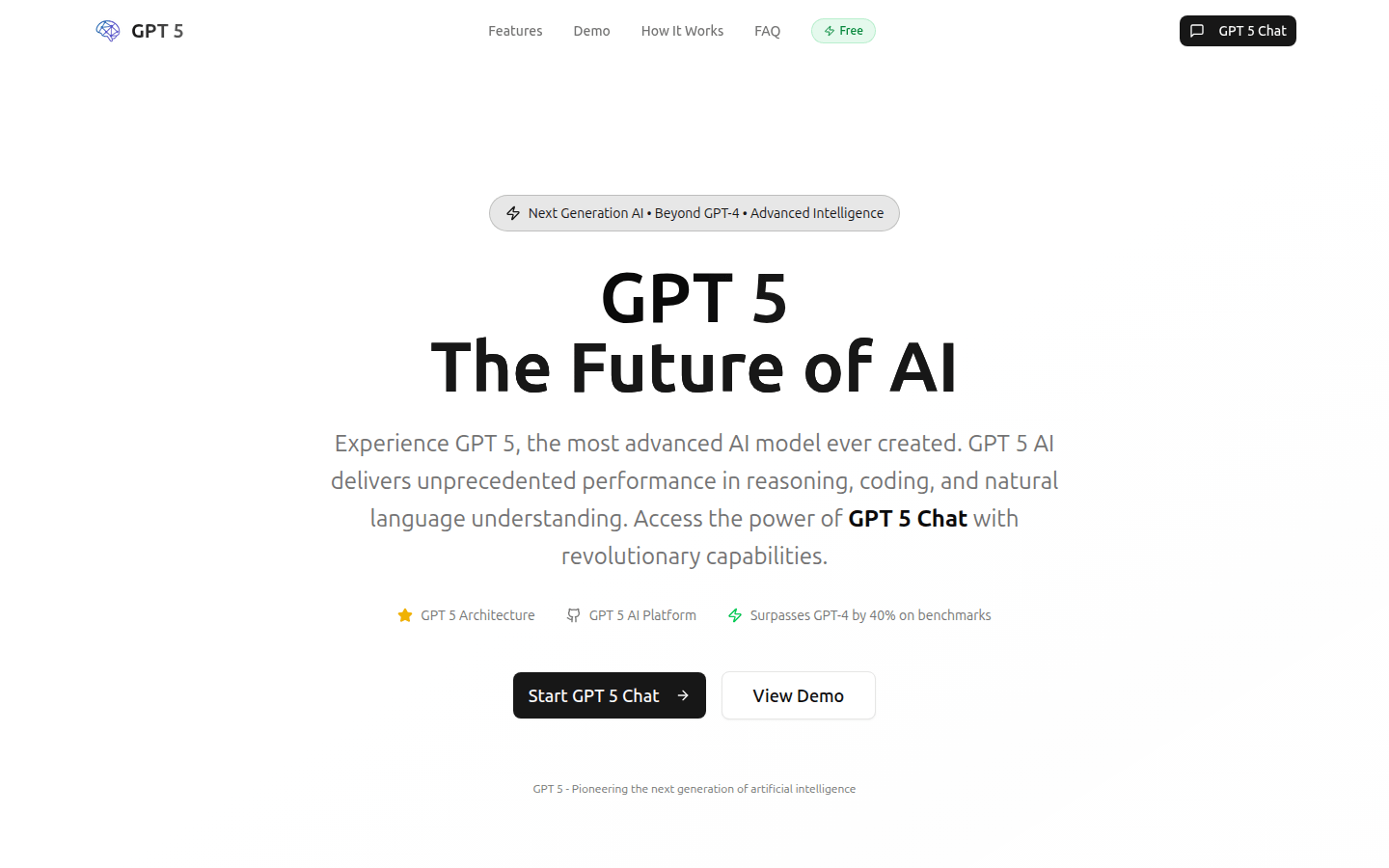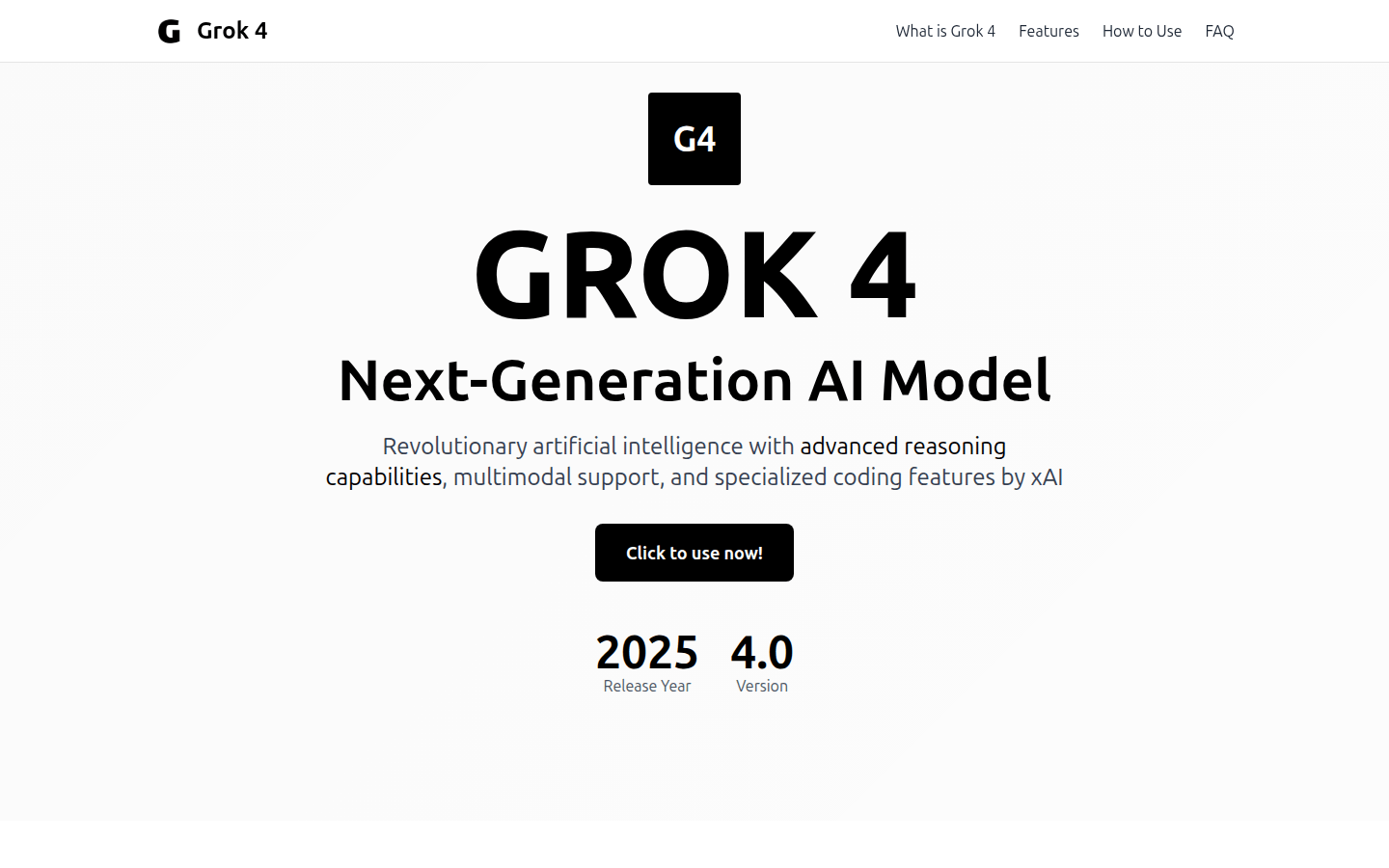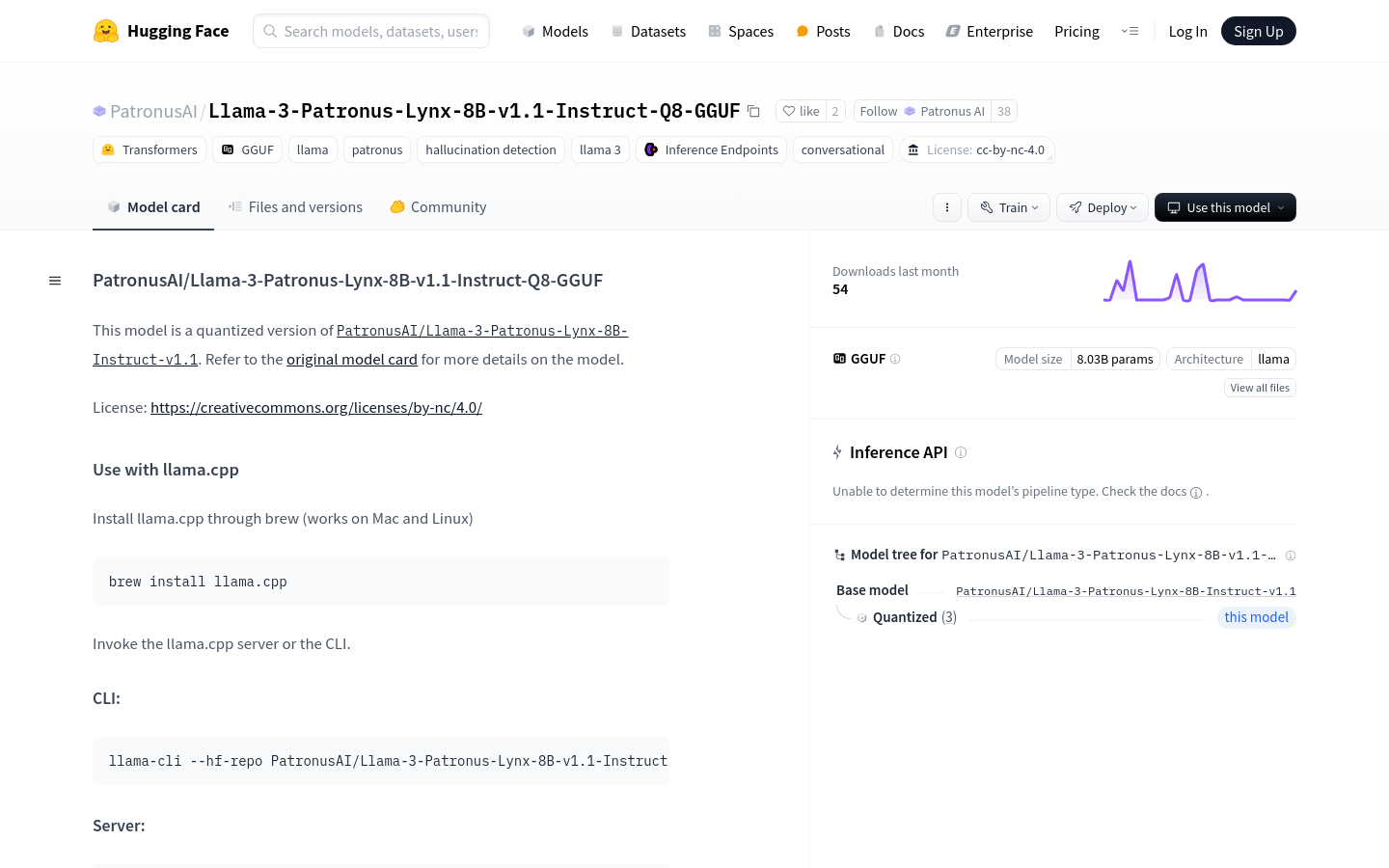PeterCat
An intelligent Q&A robot solution specially built for community maintainers and developers.

Product Details
PeterCat is an intelligent Q&A robot solution for GitHub community maintainers and developers. It uses a conversational Q&A Agent configuration system, a self-hosted deployment solution, and a convenient integrated application SDK to allow users to quickly create intelligent Q&A robots for their own GitHub warehouses and integrate them into official websites or projects to improve the efficiency of community technical support. The main advantages of PeterCat include conversational interaction, automatic knowledge storage, multi-platform integration, etc. It reduces the workload of community maintenance through automation and improves the speed and quality of problem solving.
Main Features
How to Use
Target Users
The target audience is GitHub community maintainers and developers, who need an efficient technical support tool to manage and answer community questions. PeterCat helps them reduce repetitive work and improve the efficiency and quality of problem handling through automation. It is especially suitable for developers and maintainers who need to quickly respond to community questions and maintain project documents.
Examples
Developers use PeterCat to create Q&A robots for their open source projects to improve the efficiency of community interaction.
Enterprises use PeterCat to integrate into official websites and provide customer support services.
Community maintainers use PeterCat to automatically answer common questions and reduce maintenance workload.
Quick Access
Visit Website →Categories
Related Recommendations
Discover more similar quality AI tools

Gpt 5 Ai
GPT 5 is the next milestone in the development of AI, with unparalleled capabilities. Benefits include enhanced reasoning, advanced problem-solving, and unprecedented understanding. Please refer to the official website for price information.

Grok 4
Grok 4 is the latest version of the large-scale language model launched by xAI, which will be officially released in July 2025. It has leading natural language, mathematics and reasoning capabilities and is a top model AI. Grok 4 represents a huge step forward, skipping the expected Grok 3.5 version to speed up progress in the fierce AI competition.

Qwen3
Qwen3 is the latest large-scale language model launched by the Tongyi Qianwen team, aiming to provide users with efficient and flexible solutions through powerful thinking and rapid response capabilities. The model supports multiple thinking modes, can flexibly adjust the depth of reasoning according to task requirements, and supports 119 languages and dialects, making it suitable for international applications. The release and open source of Qwen3 will greatly promote the research and development of large-scale basic models and help researchers, developers and organizations around the world use cutting-edge models to build innovative solutions.

Llama 3.1 Nemotron Ultra 253B
Llama-3.1-Nemotron-Ultra-253B-v1 is a large language model based on Llama-3.1-405B-Instruct, which undergoes multi-stage post-training to improve reasoning and chatting capabilities. This model supports context lengths up to 128K, has a good balance between accuracy and efficiency, is suitable for commercial use, and aims to provide developers with powerful AI assistant functions.

Open Multi-Agent Canvas
Open Multi-Agent Canvas is an open source multi-agent chat interface built on Next.js, LangGraph and CopilotKit. It allows users to manage multiple agents in a dynamic conversation and is primarily used for travel planning and research. This product utilizes advanced technology to provide users with an efficient and flexible multi-agent interactive experience. Its open source feature allows developers to customize and expand according to needs, with high flexibility and scalability.

DeepSeek Project
The DeepSeek Project is a comprehensive technology project that aims to provide multiple capabilities by integrating the DeepSeek API. It includes an intelligent chatbot capable of automated message responses through the WeChat interface, supporting multiple rounds of conversations and context-sensitive replies. In addition, the project also provides a localized file processing solution to solve the technical limitations of the DeepSeek platform's unopened file upload API. It also includes the ability to quickly deploy DeepSeek distillation models, supports running locally on the server and includes a front-end interface. This project is mainly aimed at developers and enterprise users, helping them quickly implement intelligent chatbots and file processing functions, while providing efficient model deployment solutions. The project is open source and free, and is suitable for users who need to quickly integrate AI functions.

RAG Web UI
RAG Web UI is an intelligent dialogue system based on RAG technology. It combines document retrieval and large-scale language models to provide enterprises and individuals with intelligent question and answer services based on knowledge bases. The system adopts a front-end and back-end separation architecture and supports intelligent management of multiple document formats (such as PDF, DOCX, Markdown, Text), including automatic blocking and vectorization processing. Its dialogue engine supports multiple rounds of dialogue and reference annotation, and can provide accurate knowledge retrieval and generation services. The system also supports flexible switching of high-performance vector databases (such as ChromaDB, Qdrant), and has good scalability and performance optimization. As an open source project, it provides developers with a wealth of technical implementations and application scenarios, and is suitable for building enterprise-level knowledge management systems or intelligent customer service platforms.

QwQ-32B-Preview-gptqmodel-4bit-vortex-v3
This product is a 4-bit quantized language model based on Qwen2.5-32B, which achieves efficient reasoning and low resource consumption through GPTQ technology. It significantly reduces the storage and computing requirements of the model while maintaining high performance, making it suitable for use in resource-constrained environments. This model is mainly aimed at application scenarios that require high-performance language generation, such as intelligent customer service, programming assistance, content creation, etc. Its open source license and flexible deployment methods make it suitable for a wide range of applications in commercial and research fields.

xiaozhi-esp32
xiaozhi-esp32 is an open source AI chatbot project developed based on Espressif's ESP-IDF. It combines large language models with hardware devices to enable users to create personalized AI companions. The project supports speech recognition and dialogue in multiple languages, has a voiceprint recognition function, and can identify the voice characteristics of different users. Its open source feature lowers the threshold for AI hardware development, provides valuable learning resources for students, developers and other groups, and helps promote the application and innovation of AI technology in the hardware field. The project is currently free and open source, and is suitable for developers of different levels to learn and develop secondary projects.

Llama-3-Patronus-Lynx-8B-v1.1-Instruct-Q8-GGUF
PatronusAI/Llama-3-Patronus-Lynx-8B-v1.1-Instruct-Q8-GGUF is a quantized version based on the Llama model, designed for dialogue and hallucination detection. This model uses the GGUF format, has 803 million parameters, and is a large language model. Its importance lies in its ability to provide high-quality dialogue generation and hallucination detection capabilities while maintaining efficient model operation. This model is built based on the Transformers library and GGUF technology, and is suitable for application scenarios that require high-performance dialogue systems and content generation.

Radio LLM
radio-llm is a platform for integrating long language models (LLMs) with Meshtastic mesh communication networks. It allows users on the mesh network to interact with LLM for concise, automated responses. Additionally, the platform allows users to perform tasks through LLM such as calling emergency services, sending messages, and retrieving sensor information. Product background information shows that currently only demonstration tools for emergency services are supported, and more tools will be launched in the future.

Meta Llama 3.3
Meta Llama 3.3 is a 70B parameter multilingual large-scale pre-trained language model (LLM) optimized for multilingual conversation use cases and outperforms many existing open source and closed chat models on common industry benchmarks. The model adopts an optimized Transformer architecture and uses supervised fine-tuning (SFT) and human feedback-based reinforcement learning (RLHF) to comply with human usefulness and safety preferences.

Llama-3.3-70B-Instruct
Llama-3.3-70B-Instruct is a large-scale language model with 7 billion parameters developed by Meta, which is specially optimized for multi-language dialogue scenarios. The model uses an optimized Transformer architecture and uses supervised fine-tuning (SFT) and human feedback-based reinforcement learning (RLHF) to improve its usefulness and safety. It supports multiple languages and can handle text generation tasks, and is an important technology in the field of natural language processing.

OLMo-2-1124-13B-DPO
OLMo-2-1124-13B-DPO is a 13B parameter large-scale language model that has undergone supervised fine-tuning and DPO training. It is mainly targeted at English and aims to provide excellent performance on a variety of tasks such as chat, mathematics, GSM8K and IFEval. This model is part of the OLMo series, which is designed to advance scientific research on language models. Model training is based on the Dolma dataset, and the code, checkpoints, logs and training details are disclosed.

Llama-3.1-Tulu-3-70B-SFT
Llama-3.1-Tulu-3-70B-SFT is part of the Tülu3 model family, designed to provide a comprehensive guide to modern post-training techniques. The model not only performs well on chatting tasks, but also achieves state-of-the-art performance on multiple tasks such as MATH, GSM8K, and IFEval. It is trained on publicly available, synthetic and human-created datasets, is primarily in English, and is licensed under the Llama 3.1 Community License.

Hermes 3 - Llama-3.1 70B
Hermes 3 is the latest version of the Hermes series of large language models (LLM) launched by Nous Research. Compared with Hermes 2, it has significant improvements in agent capabilities, role playing, reasoning, multi-turn dialogue, and long text coherence. The core concept of the Hermes series of models is to align LLM with users, giving end users powerful guidance capabilities and control. Based on Hermes 2, Hermes 3 further enhances function calling and structured output capabilities, and improves general assistant capabilities and code generation skills.